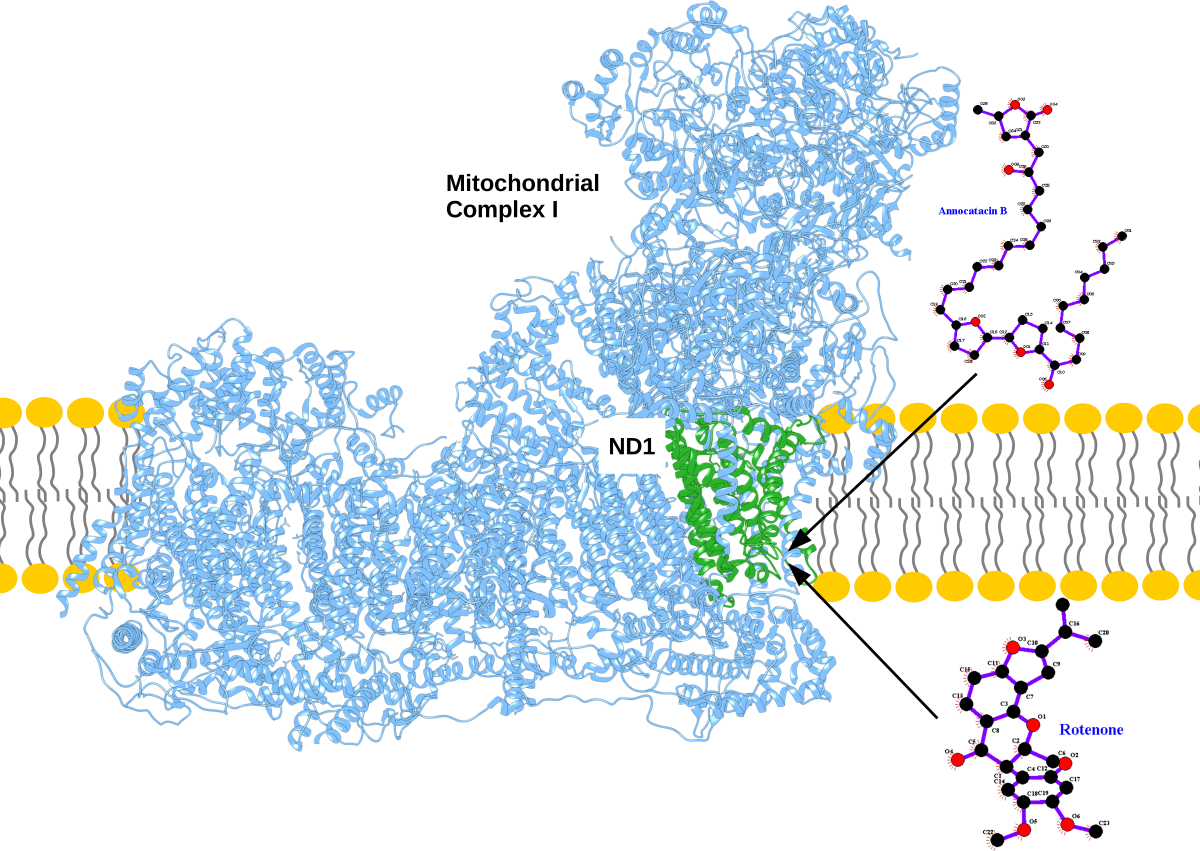ND1 subunit possesses the majority of the inhibitor binding domain of the human MRC-I. This is an attractive target for the search for new inhibitors that seek mitochondrial dysfunction. It is known, from in vitro experiments, some metabolites from Annona muricata called acetogenins have important biological activities such as anticancer, antiparasitic, and insecticide. Previous studies propose an inhibitory activity of bovine MRC-I by bis-THF acetogenins such as annocatacin B, however, there are few studies on its inhibitory effect on human MRC-I. In this work, we evaluate the molecular and energetic affinity of the annocatacin B molecule with the human ND1 subunit in order to elucidate its potential capacity to be a good inhibitor of this subunit. For this purpose, QM optimizations, MD simulations and MM/PBSA analysis were performed. As a control to compare our outcomes, the molecule rotenone, which is a known MRC-I inhibitor, was chosen. Our results show that annocatacin B has a greater affinity for the ND1 structure, its size and folding were probably the main characteristics that contributed to stabilize the molecular complex. Furthermore, the MM/PBSA calculations showed a 35% stronger BFE compared to the rotenone complex. Detailed analysis of the BFE shows that the aliphatic chains of annocatacin B play a key role in molecular coupling by distributing favorable interactions throughout the major part of the ND1 structure. These results are consistent with experimental studies that mention that acetogenins may be good inhibitors of MRC-I.

